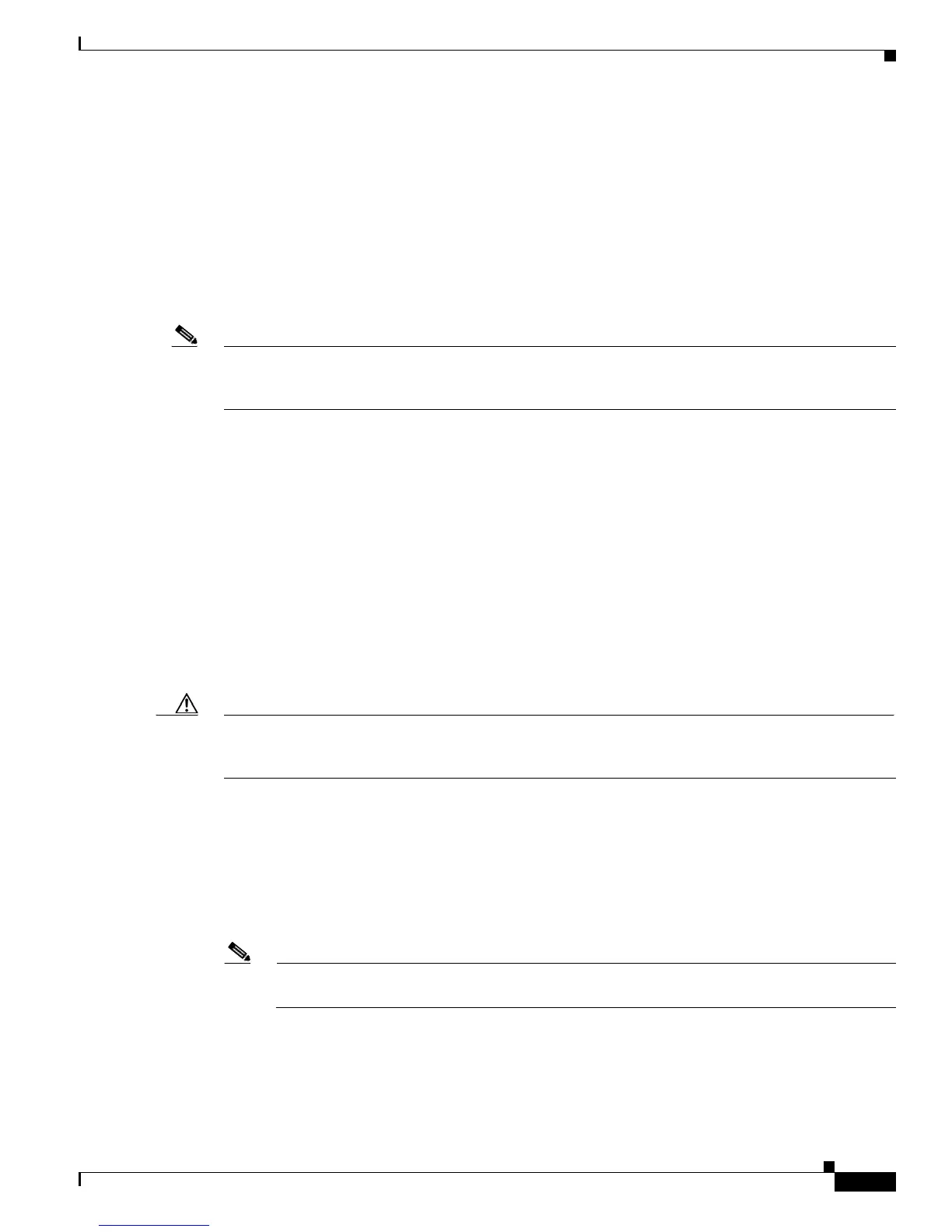11-3
Cisco ME 3400 Ethernet Access Switch Software Configuration Guide
OL-9639-07
Chapter 11 Configuring VLANs
Understanding VLANs
Supported VLANs
VLANs are identified with a number from 1 to 4094. VLAN IDs 1002 through 1005 are reserved for
Token Ring and FDDI VLANs. VLAN IDs greater than 1005 are extended-range VLANs and are not
stored in the VLAN database.
Although the switch supports a total of 1005 (normal-range and extended-range) VLANs, the number of
routed ports, SVIs, and other configured features affects the use of the switch hardware.
The switch supports per-VLAN spanning-tree plus (PVST+) or rapid PVST+ with a maximum of 128
spanning-tree instances. One spanning-tree instance is allowed per VLAN.
Note Network node interfaces (NNIs) support STP by default. Enhanced network interfaces (ENIs) can be
configured to support STP. User network interfaces (UNIs) do not support STP and by default are always
in a forwarding state.
See the “VLAN Configuration Guidelines” section on page 11-8 for more information about the number
of spanning-tree instances and the number of VLANs. The switch supports IEEE 802.1Q trunking for
sending VLAN traffic over Ethernet ports.
Normal-Range VLANs
Normal-range VLANs are VLANs with VLAN IDs 1 to 1005. You can add, modify or remove
configurations for VLANs 2 to 1001 in the VLAN database. (VLAN IDs 1 and 1002 to 1005 are
automatically created and cannot be removed.)
Configurations for VLAN IDs 1 to 1005 are written to the file vlan.dat (VLAN database), and you can
display them by entering the show vlan privileged EXEC command. The vlan.dat file is stored in flash
memory.
Caution You can cause inconsistency in the VLAN database if you try to manually delete the vlan.dat file. If you
want to modify the VLAN configuration, use the commands described in these sections and in the
command reference for this release.
You can set these parameters when you create a new normal-range VLAN or modify an existing VLAN
in the VLAN database:
• VLAN ID
• VLAN name
• VLAN type (Ethernet, Fiber Distributed Data Interface [FDDI], FDDI network entity title [NET],
TrBRF, or TrCRF, Token Ring, Token Ring-Net)
Note The switch supports only Ethernet VLANs. You can configure parameters for FDDI and Token
Ring VLANs and view the results in the vlan.dat file, but these parameters are not used.
• VLAN state (active or suspended)
• Maximum transmission unit (MTU) for the VLAN
• Security Association Identifier (SAID)

